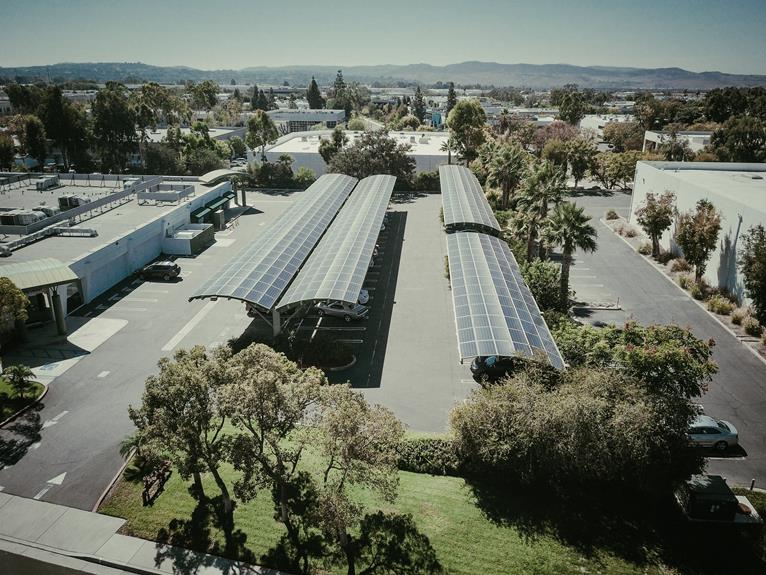Solar Technology: Perovskite-Silicon Tandem Cells Unleash the Power of Sunlight
In the realm of solar energy, the advent of perovskite-silicon tandem cells rings the bell of a paradigm shift, promising a future brighter than the sun.
These cells, akin to power-boosting spinach for Popeye, have achieved upwards of 30% efficiency, a feat that catapults solar power into a new era.
The crux of this revolutionary breakthrough lies in the addition of a perovskite layer atop silicon-based cells that enhances light absorption, while simultaneously reducing the cost of solar electricity.
Noteworthy strides have been made by two research groups, achieving efficiency leaps of 32.5% and 31.25%.
However, as with any story of progress, there are challenges to conquer, including issues of degradation rate and stability of these tandem cells.
The potential exists for the commercial availability of these cells within five years, a development that could significantly contribute to the battle against global warming.
Energy Efficiency Breakthrough
In a transformative development for solar power, the energy efficiency of solar cells has been significantly enhanced, with new perovskite-silicon tandem cells achieving over 30% efficiency, surpassing the previous record of 24.5% for commercial silicon-only cells.
This is no laughing matter – the implications for the industry are profound. This leap in efficiency, akin to a couch potato suddenly winning a marathon, not only boosts light absorption but also brings with it a welcomed cost reduction.
In the race against the clock to tackle the climate crisis, these tandem cells may be the speedy hare we’ve been waiting for. Yet, as we revel in this triumph, let’s remember, the stability and degradation rate of these solar hares still need scrutiny.
Let the solar revolution begin!
Scaling Production Challenges
Scaling up the production of these high-efficiency energy converters from laboratory sizes to commercially viable units presents significant technical challenges. The process of amplifying the production of perovskite-silicon tandem cells is akin to baking the perfect cake on a grand scale; one must ensure the ingredients are mixed precisely, the temperature is just right, and timing is impeccable.
This is where production scalability and manufacturing challenges come into play. Dealing with defects on the perovskite layer surface, akin to the unwanted bubbles in our metaphorical cake, requires the addition of a layer of organic molecules.
It’s a delicate dance of chemistry and engineering, with the tantalizing promise of increased efficiency and lower cost solar electricity serving as the ultimate prize.
Overcoming Surface Defects
Addressing surface defects has been a critical step in improving the efficiency of these energy converters. The pesky little irregularities on the perovskite layer were a bit like a solar cell’s own version of acne – unsightly and detrimental to performance. However, by adding a layer of organic molecules, these imperfections were managed, much like a well-formulated skin cream, improving performance and giving a new glow to the cells.
This optimization may seem insignificant, like blaming a speck of dust for a computer crash, but in the complex world of solar cell manufacturing, every micro-blemish matters. Optimizing manufacturing by addressing these minute defects has provided an unexpected twist in the solar saga, showing that sometimes, it’s the small things that make a big difference.

Financial Considerations
Financial implications of this technological advancement have been a focal point, given that the commercial success of highly efficient photovoltaic devices depends not only on their performance but also on their cost-effectiveness.
Pondering over the cost implications, it’s clear that the price tag of producing perovskite-silicon tandem cells must be palatable to the market. Balancing the financial scales, the potential for reduced cost of solar electricity is a tantalizing prospect.
However, this high-stakes financial dance isn’t doing a solo. Funding sources, both public and private, play a pivotal role in this intricate energy ballet. Their investment could fuel the scale-up of these tandem cells from laboratory prototypes to commercially viable products.
Amidst these monetary considerations, the mantra remains: innovation, cost-effectiveness, and a dash of fiscal humor.
Future Projections
Projections for the future of renewable energy sources suggest a significant increase in the use of photovoltaic devices due to advancements in technology and efficiency.
The introduction of perovskite-silicon tandem cells promises a sunny horizon, catapulting solar power into the limelight with a potential efficiency well beyond the current 35% mark. Future advancements in this field, particularly addressing the degradation rate and stability of tandem cells, could revolutionize the industry, offering a viable solution to global heating. It’s like giving solar power cells a superhero cape!
The market potential is as vast as the sky itself, with solar power capacity projected to reach an astounding 75 TW by 2050. Laughter might be the best renewable resource, but these tandem cells are a close second.






One Comment
Comments are closed.